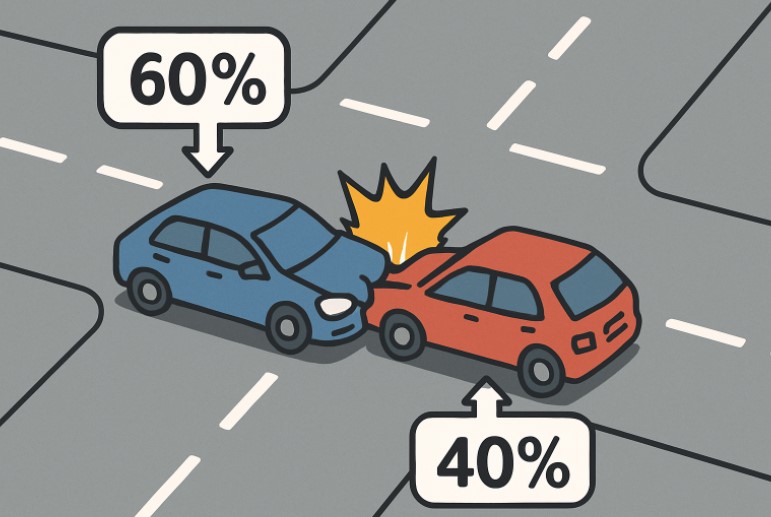Determining fault in a car accident is crucial to resolving disputes and securing fair compensation for the losses incurred. In Nevada, unique legal standards and procedures influence the process of fault assessment and the ultimate determination of financial responsibility. Drivers and passengers need to understand how these rules work, as they impact everything from repair costs to medical bill coverage. For those navigating this situation, having access to expert advice is invaluable—resources like blakefriedmanlaw.com offer important guidance for managing accident claims in Nevada.
Fault determination not only dictates who pays for damages but also who is entitled to recover compensation. Understanding the steps insurance companies, law enforcement, and courts follow is crucial for anyone involved in a car accident in Nevada. Being informed can make a significant difference in securing the compensation you are entitled to under state law.
Nevada’s Fault-Based System
Nevada follows a fault-based liability system for car accidents, as opposed to a no-fault system. In this model, the party determined to be at fault for causing the collision is legally responsible for the damages. Each accident requires an investigation into the actions of all involved drivers to establish responsibility. This process can involve reviewing police reports, traffic camera footage, statements from those involved, and input from witnesses.
Unlike no-fault states—where each driver’s insurance pays their own losses regardless of who caused the crash—the at-fault driver or their insurer will bear most of the financial burden in Nevada. This makes determining fault a critical aspect of every car accident claim filed in the state.
Comparative Negligence Rule
Nevada law employs a modified comparative negligence principle. This means that drivers can recover damages even if they contributed to the accident, provided their share of fault does not exceed 50%. If it is determined that a party is 51% or more at fault, they become ineligible to receive any compensation for their losses. For example, if you are found to be 20% at fault for an accident in which your damages total $50,000, your compensation will be reduced by your percentage of fault, allowing you to recover $40,000.
This system encourages fair assessments and ensures that individuals who play a lesser role in causing an accident aren’t unfairly denied compensation. Still, it also places a sharp limit on recovery for those primarily responsible. Well-documented evidence and clear recollection of events become essential under this rule.
Factors Considered in Determining Fault
Establishing fault is a multi-faceted process in Nevada, requiring careful evaluation of many different types of evidence:
- Police Reports: Law enforcement officers investigate the accident scene, interview those involved, and document their observations. These official reports often play a significant role in determining fault and are heavily weighted by insurers and courts.
- Witness Statements: Independent witnesses can provide objective accounts and fill in gaps that parties involved may miss or misremember.
- Traffic Laws: Any violations of Nevada’s traffic regulations—speeding, running red lights, failing to yield—are factored into fault decisions.
- Physical evidence: including skid marks, debris, vehicle damage patterns, and road conditions, is analyzed to reconstruct the sequence of events leading up to the accident.
All these factors are pieced together to create a comprehensive picture of the events, helping insurance companies and courts arrive at a fair allocation of fault.
Role of Insurance Companies
After a collision, insurance companies play a pivotal role in assigning fault percentages and administering payouts. Adjusters scrutinize police reports, witness testimonies, and all available evidence to support their conclusions. It’s important to note that insurance adjusters are also motivated to minimize the amount their company pays out. This occasionally leads to disagreements over the degree of fault assigned to each party.
If you disagree with an insurance company’s determination, you are entitled to contest their decision, submit additional evidence, and even involve legal counsel to advocate on your behalf.
Legal Implications of Fault Determination
The legal consequences of fault assignment extend far beyond insurance claims. Under Nevada’s comparative negligence law, the amount you receive in a settlement is directly reduced by your percentage of fault. For example, if you are awarded $10,000 but found to be 25% at fault, you would only receive $7,500. As a result, maintaining accurate records and compiling substantial evidence is critical to maximizing your compensation and defending against claims of negligence.
Fault decisions also influence whether you may be subjected to lawsuits from other parties—or if you can pursue additional legal action yourself. Consulting with an attorney can provide tailored advice about your specific scenario and potential avenues to maximize your compensation.
Steps to Take After an Accident
To protect your rights and build a strong claim after a car accident in Nevada, follow these crucial steps:
- Report the Accident: Contact law enforcement immediately to ensure an official police report is created.
- Gather Evidence: Take photos of the accident scene, all vehicles involved, and any visible injuries.
- Collect Witness Information: Obtain contact information from anyone who witnessed the incident.
- Seek Medical Attention: Even if you feel fine, a medical evaluation is essential for documentation and your well-being.
- Consult a Legal Professional: An attorney can guide you through the complexities of Nevada’s laws and help advocate for your best interests throughout the claims process.
Final Thoughts
Understanding how fault is determined in Nevada car accident cases is vital for protecting your financial and legal interests. Staying informed about Nevada’s fault-based system, the comparative negligence rule, and the steps to take after an accident can empower you to navigate the aftermath with confidence and achieve fair compensation for your losses.







